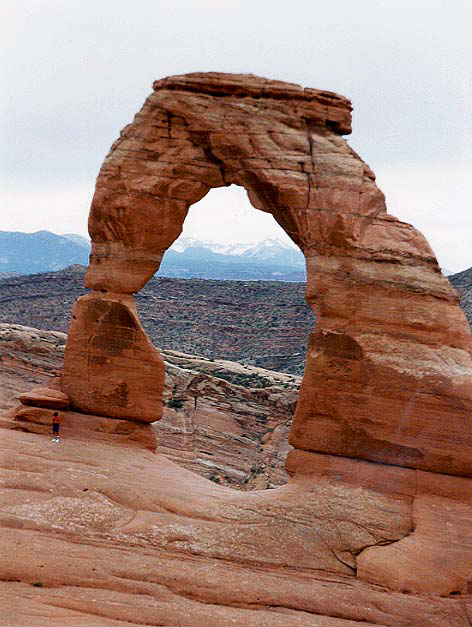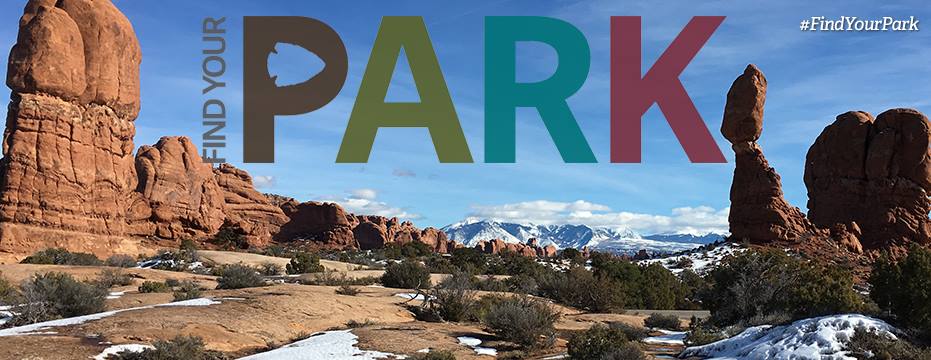The National Park Service is celebrating its centennial birthday this year. The NPS was created on August 25, 1916 under the direction of President Woodrow Wilson. All National Parks offered free admission from Aug. 25 to Aug. 28. Centennial celebrations took place across the nation, including the creation of a “living emblem” in Washington, D.C. on the National Mall.
The celebration coincides with expected record-high attendee numbers in national parks, including Utah’s already congested parks.
This has already proven to be the case, according to NPS statistics. In the months of May, June and July of 2016, Arches National Park brought in a total of 623.783 visitors. Zion National Park recorded a total of 1,592,827 visitors in those same months.
The line of cars entering Arches National Park is often at least a half-mile long. Arches is a popular Utah location between late March and the end of October. In the most extreme cases, like Memorial Day 2015, Utah Highway Patrol has been called to organize the chaos, going so far as to shut down the entrance to Arches.

With a park brimming with visitors, Arches officials deal with issues like off-road parking because of lack of parking spaces and improvised trails created to avoid congestion on walkways. These kinds of behaviors negatively affect the resources and landscapes the parks were set aside to preserve.
Arches National Park is not alone in this struggle. All of Utah’s five national parks have been working to keep up with record-breaking numbers of park attendees.
In the months of May, June and July of 2016, Arches National Park brought in a total of 623,783 visitors. Zion’s National Park recorded a total of 1,592,827 visitors in those same months.
In 2015, all five parks brought in a collective 8.3 million people—1.2 million more than the previous year — according to National Park Service statistics.
“When I’ve visited the parks during the summer, they’re always so crowded,” said Christian Santiago, a BYU junior who frequents Utah’s national parks. “The parking lots are full, and sometimes it’s hard to get away from the crowd.”
Erika Pollard, the senior program manager of the southwest region for the National Parks Conservation Association, said increasing attendance numbers are causing issues.
“In terms of ‘record-breaking numbers,’ they are really blowing records away in park visitation,” Pollard said. “In 2015, they had a 13 percent increase on average for all of the parks, and now they have to deal with how to manage and protect those resources that the parks were set aside for.”
The issue the parks face is a balance between accessibility and conservation. Pollard said at Arches specifically, the goal is to develop a system that allows for the greatest number of vehicles to enter the park while still maintaining achievable goals of landscape protection and conservation of park land.
“At Arches, they’re really trying to address the congestion issue and are currently in the process of a congestion management plan,” Pollard said. “The biggest feedback they’ve gotten at the park is that it’s difficult to find parking spaces, and that has an impact of vegetation when people are starting to park alongside the road. So they’ve reconfigured and expanded some of the parking lots, but that’s not a long-term solution when we’re looking at numbers that will continue to go up over the years.”
Jim Ireland, superintendent of Timpanogos Cave National Monument, said national park sites across the country are changing their operation methods to accommodate the growing numbers of people.

“To some degree right now, we are driven by our infrastructure,” Ireland said. “We are full when the parking lot is so full or the road is so full that nobody else can come in. There are a lot of people that say ‘if you can get people through the gates faster that would alleviate congestion.’ But if we push them through the gates faster, then everything beyond the gate just fills up that much faster too.”
Other national parks have incorporated various methods to combat congestion. At Zion National Park in St. George, a shuttle service takes over the roads in the park from March until the end of October. Zion Canyon Scenic Drive, the main road through the park, is closed entirely to vehicles other than the shuttles during those months.
But at Arches, the shuttles may not be an option. Instead, one thing the park has done to keep visitors better prepared and informed for their trips to the park is install a webcam at the park entrance to show the current conditions for the line into the park.
Kate Cannon, superintendent of the Southeast Utah Group of National Parks, said the cameras are already helping the problem.
“The camera on the top of the entrance gate looks back along the road where cars come into the park,” Cannon said. “If the line is too long, most people say ‘We’ll try again later,’ and go do something else. Luckily in Moab, there is always something else to do.”
Another possible solution for Arches is a timed-entry system where attendees purchase tickets for a specific time attendees either choose or are assigned at which they can enter the park.
“It would be similar to other places where you have to get a permit to go into a certain part of the park,” Pollard said. “You would have to plan ahead of time when you’re going to be visiting the park, and then get a timed entry ticket to enter the park on a specific day at a specific time.”




